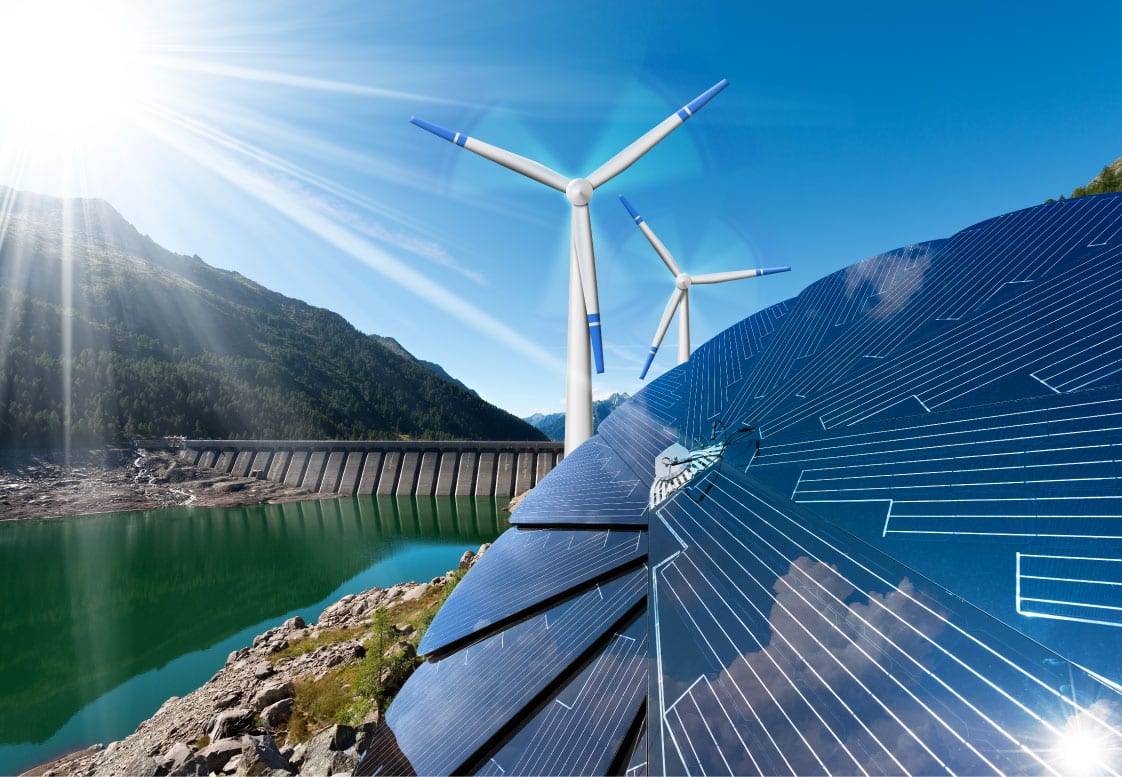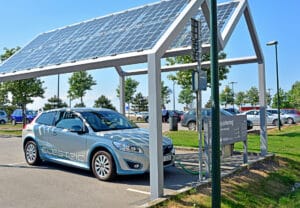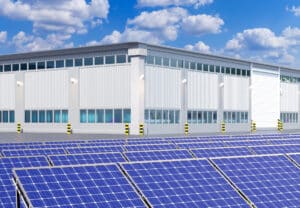
Have you ever wondered how much the electricity you use costs? Sure we try to conserve energy, turn off lights, make sure our remote sites aren’t running when idle, but the actual economics behind our energy use is oft-forgotten.
Though the world is still heavily reliant on energy derived from fossil fuels, recent trends in renewable energy have made the traditionally cost-prohibitive energy sources much more accessible.
Before diving into a cost breakdown for renewable energy, let’s first talk about how organizations can begin to calculate and monitor their energy costs.
How are energy costs tracked?
Besides tracking overall energy expenditures, there are several ways to accurately calculate and compare the energy costs for diverse consumption sources. The two primary methods are the Levelized Cost of Energy (LCOE) and Energy System Analysis (ESA).
LCOE
LCOE is a calculation used to assess the relative cost of energy-generating technologies. This metric determines the lifetime costs for energy supply according to usage scale, location, and type of energy. That includes the cost per unit of energy generated and the installation costs involved in a similar ratio.
ESA
On the other hand, ESA focuses on a more macro level. It examines and analyzes the entire energy system instead of individual devices. Instead of calculating the cost compared to the energy generated, it defines the total cost of the entire energy system. This method also examines metrics beyond energy costs, including carbon emissions and fuel consumption, among other energy management KPIs.
Why is renewable energy adoption so important?
Several ambitious targets and plans have been signed to reach specific clean energy and emission reduction milestones. From Net Zero to COP26, nations and multinational enterprises have made broad commitments to stymie rising global temperatures and carbon emissions. However, the window to meet these targets is almost completely closed.
According to BloombergNEF, there would need to be an immediate seismic shift in increased renewable energy capacity and investment for the world to stay on track for climate targets. In order to stay on track to meet targets just in 2030, we would need to introduce over 500GW of wind energy, 455GW of solar, and 245GW of energy storage EVERY YEAR until then.
Another challenge is the continuing presence and widespread reliance on fossil fuels, especially in developing countries with unstable electrical grids. Fossil fuels still comprise over 80% of the world’s energy production and also makeup 87% of the world’s total CO2 emissions. So what would happen if we pushed renewable energy adoption forward in a more active and widespread way?
Rapid and widespread adoption of renewable energy technology would have a marked effect on both issues. By 2050, sufficient renewable energy use could remove over half of the world’s power-related carbon emissions. Though that might not be enough to meet Net Zero goals, it would make significant and long-lasting progress towards more efficient and carbon-neutral energy reliance.
Though the concept is a bit utopian, these changes go far beyond “saving the environment” and meeting ESG targets. Our current energy usage habits are costing us an incredible amount, and the potential savings are even more impressive.
Recent research by IRENA found that the cumulative benefits of achieving these goals in terms of health, subsidy, and climate-centered savings would surpass $160 Trillion. From that calculation, every dollar invested in transforming the current energy landscape would yield a return on investment between $3 and $7. They also found that with the necessary investment and implementation, renewable energy sources could effectively supply 86% of the world’s projected energy needs for 2050.
Now that we’ve discussed the importance and potential for renewable energy on a global scale let’s dive into our cost competition and reveal the winner(s).
Renewable Energy Showdown – Which is the cheapest?

In the case of this article, we are focused on the LCOE model, examining the latest data from trends in energy prices from the last decade. One of the most significant driving forces behind the potential for broad adoption of renewable energy sources is the steady decline in LCOEs for renewables nearly across the board.
Fossil fuels varied but averaged in a range between $0.05/kWh and $0.15/kWh in terms of their LCOEs during this period. But is renewable energy cheaper, and which renewable energy source is the most expensive?
Before we announce the “winner,” we first need to examine recent trends across the energy sector. We’ve broken down the findings of the International Renewable Energy Agency (IRENA) for you by type below.
Harnessing the Sun's energy just got cheaper
Solar photovoltaic (PV) power saw the greatest change in cost per kWh, dropping by 85% from $0.381/kWh to $0.057/kWh in the past decade. Concentrating solar power (CSP) saw a 68% decrease in the same period from $0.340/kWh to $0.108/kWh. Installation costs also fell precipitously in the last decade, from $4,731/kW to $883/kW.
This was a major contributor to changes in the total capacity, which ballooned from 42GW in 2010 to 714GW in 2020. This took solar energy from the most expensive renewable source and double the price of fossil fuel alternatives to one of the most cost-effective.
Wind energy is no pushover
Onshore wind projects were more cost-effective from the outset than many other renewables, but by 2020 became the cheapest new energy source per kWh in the world. Costs fell by 56%, from $0.089/kWh to $0.039/kWh, with capacity more than tripling to nearly 700GW over the past decade.
Installation costs dropped as well, albeit less drastically than in the case of solar, from $1,971/kW to $1,355/kW. Whereas solar cost reductions centered on falling overall installation costs, onshore and offshore wind projects were aided by turbine prices, plant costs, and higher capacities from newer wind technologies. Offshore wind only comprised a 20th of onshore capacity by 2020, though costs dropped by nearly 50%.
Water, water everywhere and underutilized
Hydroelectric power is one of the US’s most underutilized renewable energy sources. Of the more than 80,000 dams across the country, less than 10% are used for electricity generation. However, it still provides more electricity capacity than any other renewable energy source worldwide.
In terms of economics, hydroelectric power saw an 18% increase in LCOE, from $0.038/kW to $0.044/kW. This is still cheaper than any available fossil fuel in the same period and added 715GW of power from these sources alone. The only barrier to significantly lower costs is proper adaptation and utilization of existing resources (dams).
Heat is rising along with costs
Geothermal heat behaved rather erratically in this period. Overall, the cost increased from $0.05/kWh to $0.071/kWh by 2020. Despite this, a consistent decrease in the past four years should continue to trend downward with the growing number of worldwide plants being commissioned.
Put that biomass to work
Biomass was the only renewable energy source to begin and end the decade at the same cost, $0.076/kWh. It remains at the low end of the cost spectrum when compared to fossil fuel alternatives but only added 60GW in the last ten years.
So which renewable energy source is the cheapest?
According to the IEA’s World Energy Outlook and other research projects, solar and wind energy have continued to occupy the top spots in terms of the cheapest renewable energy sources. Both energy sources cost significantly less than fossil fuel alternatives and continue to become more affordable every year.
Solar PV, in particular in terms of its scope, significant price decreases across the board, and increasing energy capacity can be seen as the true winner, though it’s a close race when comparing the overall costs.
With the winner(s) established, it is important to understand how renewable energy sources still need optimization to provide the greatest return on investment.
Energy Efficiency for Renewables with Galooli
Even by their very nature, renewable energy sources will always be more efficient than fossil fuels for one simple reason – they aren’t finite. Harnessing the Sun’s rays, wind, waves, or biowaste is only a matter of having the necessary infrastructure and technology to succeed.
However, this does not mean that unlike many of the fossil fuel or grid-reliant sites and energy assets we monitor and manage, renewable energy sources are reaching the peak of their efficiency. Many remote sites often even have these assets installed but completely miss the potential to reduce their reliance on purchased energy simply by forgetting to optimize these assets.
Fortunately, Galooli’s remote monitoring and management (RMM) solution focuses beyond just traditional energy efficiency. We track both LCOE and ESA-based KPIs in real-time and historically to provide actionable insights to maximize renewable energy efficiency and minimize energy waste. This is achieved through a number of vectors regarding managing an organization’s and site’s energy use.
Remote Monitoring
We can monitor and optimize the use of these renewable assets according to various factors, including weather patterns and geographic location. With modules like our SolarAI, we can track the performance of renewable energy assets and maximize their potential, both in terms of the energy they produce and the carbon emission savings they provide.
Energy Storage Optimization
These capabilities can be taken one step further with our energy storage solution. With our battery monitoring capabilities, you can monitor the performance of these remote assets, track their location in real-time, and detect abnormalities while alerting stakeholders to these events. We can also optimize their use so that generators onsite are only used to charge the batteries, reducing fuel costs and carbon emissions while improving efficiency.
Analytics and Insights
Analytics and insights are excellent, but how does our platform translate them into real-world use cases? Most of these optimizations can be discovered with various platforms, but they still necessitate technicians physically arriving onsite to complete most changes. Galooli’s RMM solution provides remote controls to optimize your process, further reducing the necessity for onsite maintenance, travel, and time.
Reporting and Configuration
Our platform can also detect and provide regular reports regarding firmware and configuration issues and provide batch fixes from the comfort of your office. Instead of needing days, weeks, or even months to remedy issues affecting dozens or hundreds of sites, they can be synced all at once within hours with our Cut-Through solution.
Connect With Us
operational cost savings & efficiency?



























